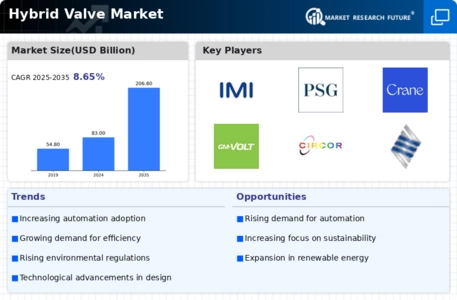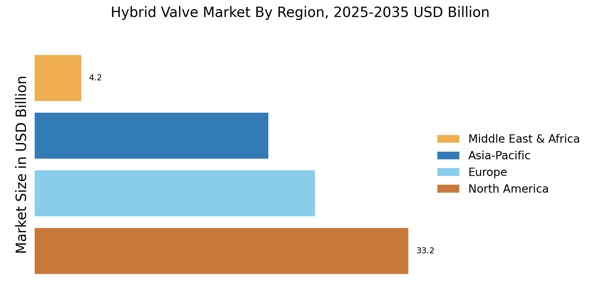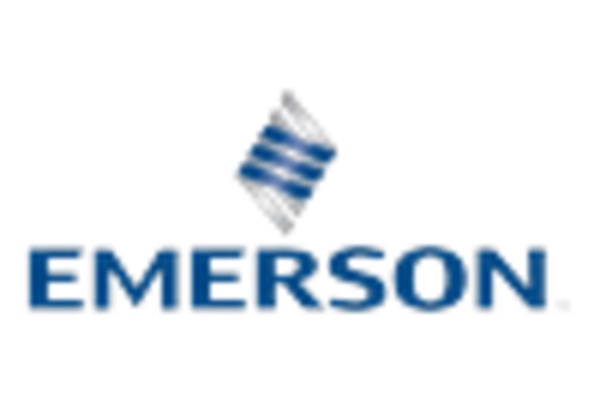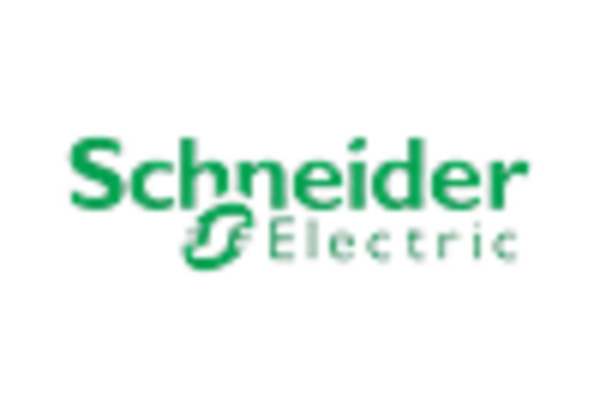Growing Infrastructure Development
Infrastructure development plays a crucial role in shaping the Hybrid Valve Market. As countries invest in upgrading and expanding their infrastructure, the demand for reliable and efficient valve solutions increases. Hybrid valves are particularly suited for applications in water supply systems, sewage treatment plants, and industrial processes. Recent statistics suggest that infrastructure spending is projected to reach trillions of dollars over the next decade, creating substantial opportunities for hybrid valve manufacturers. This trend is likely to stimulate growth in the Hybrid Valve Market, as stakeholders seek durable and versatile valve solutions to meet the demands of modern infrastructure.
Increased Focus on Water Management
The Hybrid Valve Market is witnessing a heightened focus on water management due to growing concerns over water scarcity and quality. Hybrid valves are essential components in water distribution systems, enabling efficient flow control and minimizing leaks. As municipalities and industries prioritize sustainable water management practices, the demand for hybrid valves is expected to rise. Recent reports indicate that The Hybrid Valve Market is anticipated to grow at a rate of 5% annually, with hybrid valves playing a pivotal role in enhancing system efficiency. This increasing emphasis on effective water management solutions is likely to drive growth within the Hybrid Valve Market.
Rising Demand for Energy Efficiency
The Hybrid Valve Market experiences a notable surge in demand for energy-efficient solutions. Industries are increasingly adopting hybrid valves to optimize energy consumption and reduce operational costs. This trend is particularly evident in sectors such as oil and gas, water treatment, and power generation, where energy efficiency is paramount. According to recent data, the energy-efficient valve segment is projected to grow at a compound annual growth rate of approximately 6.5% over the next five years. As organizations strive to meet sustainability goals, the integration of hybrid valves becomes a strategic choice, aligning with broader initiatives aimed at reducing carbon footprints. This growing emphasis on energy efficiency is likely to drive innovation and investment within the Hybrid Valve Market.
Emerging Applications in Renewable Energy
The Hybrid Valve Market is experiencing growth due to emerging applications in renewable energy sectors. As the world shifts towards sustainable energy sources, hybrid valves are becoming integral in wind, solar, and hydroelectric power systems. These valves facilitate efficient fluid control and contribute to the overall performance of renewable energy installations. Market analysis suggests that the renewable energy sector is expected to expand significantly, with investments projected to exceed hundreds of billions of dollars in the coming years. This trend indicates a promising future for hybrid valves, as their versatility and efficiency align with the evolving needs of the renewable energy landscape, thereby driving the Hybrid Valve Market.
Advancements in Automation and Control Systems
The Hybrid Valve Market is significantly influenced by advancements in automation and control systems. The integration of smart technologies, such as IoT and AI, enhances the functionality and efficiency of hybrid valves. These innovations allow for real-time monitoring and control, leading to improved operational performance and reduced downtime. Industries are increasingly investing in automated solutions to streamline processes and enhance productivity. Market data indicates that the automation segment within the valve industry is expected to witness a growth rate of around 7% annually. As automation becomes more prevalent, the demand for hybrid valves equipped with advanced control features is likely to rise, further propelling the Hybrid Valve Market.


















Leave a Comment